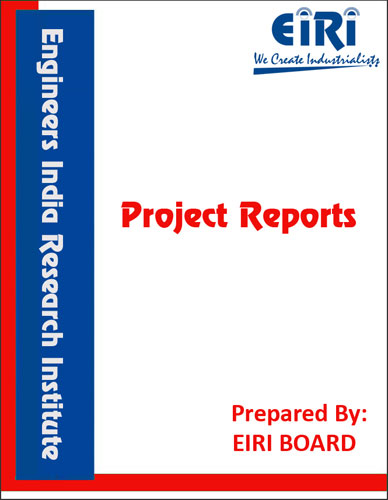COOLANT (ENGINE)
The project report includes Present Market Position and Expected Future Demand, Market Size, Statistics, Trends, SWOT Analysis and Forecasts. Report provides a comprehensive analysis from industry covering detailed reporting and evaluates the position of the industry by providing insights to the SWOT analysis of the industry.
We can prepare PROJECT REPORT as per your INVESTMENT PLAN for BANK LOAN REQUIREMENT and INDUSTRY ANALYSIS. All reports are prepared by highly qualified consultants and verified by a panel of experts.
Have Query? Click Here to Chat
Industry Expert is Online, Chat with him for more detail.

The internal combustion engine is a heat engine, inwhich chemical energy of fuel is converted into heat energy by combustion, and this heat energy is intrun converted into mechanical energy. Approximately one third of the heat energy is converted into mechanical energy, about one third is removed by the cooling system, and one third by the exhaust system. There are minor losses due to friction, radiation, and the lubrication system. For each 3.8 litres of fuel burned about 6.32 M J must be rejected to the cooling system. If this heat is not removed, the engine will be destroyed.
The cooling system consists of a (heat exchanger, thermostat, coolant pump, coolant jacket surrounding the cylinders and combustion chambers, and various rubber hoses serving as flexible connections between the radiator and engine to allow complete circulation of the coolant.
The coolant pump circulates the coolant through the engine coolant jacket, where it picks up heat dissipated by the combustion chambers & cylinders, and then through the radiator (heat exchanger), allowing the heat to be transferred to the outside air. The coolant is then returned to the engine block and the cycle is repeated.
COOLANT
The coolant used in this cooling system must fulfill the requirement of the engine, which is baiscally the removal of one third of heat produced during combustion of fuel.
An antifreeze is a substance that is added to a liquid usually water-to lower its freezing point. The applications of coolant are different from Antifreezer. The main uses is to protect internal combustion engines against freezing and the resultant damage to the engine water jacket and the radiator.
Two general types of cooling systems are used in the engines, liquid and air. All current domestic passenger cars, heavy vehicles, use a liquid cooling system. In this system the liquid or coolant constantly circulates throughout the engine, absorbing heat from the engine.
For a given volume, water has the ability to absorb more heat from engine parts than any other type of liquid coolant used in vehicles. However, water presents some problems when used as a primary engine coolant. First,
metal components exposed to water will corrode and rust creat contaminants that will close the water jackets and radiator passages. The second one is that water has a boiling and freezing temperature limit.
1. INTRODUCTION:
2. REQUIREMENT OF COOLANTS
3. HOW TO USE COOLANT
4. SERVICE PERIOD
5. USES & APPLICATIONS
6. PHYSICAL PROPERTIES OF ETHYLENE GLYCOL
7. B I S SPECIFICATIONS AND REQUIREMENTS
8. MARKET POSITION WITH FUTURE DEMAND
9. PRESENT MANUFACTURERS OF ENGINE COOLANT
10. MANUFACTURING PROCESS
11. PROCESS FLOW DIAGRAM
12. PRINCIPLES OF PLANT LAYOUT
13. PLANT LOCATION FACTORS
14. PROCESS FLOW SHEET
15. ADDRESSES OF RAW MATERIAL SUPPLIERS
16. ADDRESSES OF RAW MATERIAL SUPPLIERS
(KOLKATA BASED)
17. ADDRESSES OF PLANT & MACHINERY SUPPLIERS
18. ADDRESSES OF PLANT & MACHINERY SUPPLIERS
(KOLKATA BASED)
19. PLANT LAYOUT
APPENDIX – A :
1. COST OF PLANT ECONOMICS
2. LAND & BUILDING
3. PLANT AND MACHINERY
4. FIXED CAPITAL INVESTMENT
5. RAW MATERIAL
6. SALARY AND WAGES
7. UTILITIES AND OVERHEADS
8. TOTAL WORKING CAPITAL
9. COST OF PRODUCTION
10. PROFITABILITY ANALYSIS
11. BREAK EVEN POINT
12. RESOURCES OF FINANCE
13. INTEREST CHART
14. DEPRECIATION CHART
15. CASH FLOW STATEMENT
16. PROJECTED BALANCE SHEET



